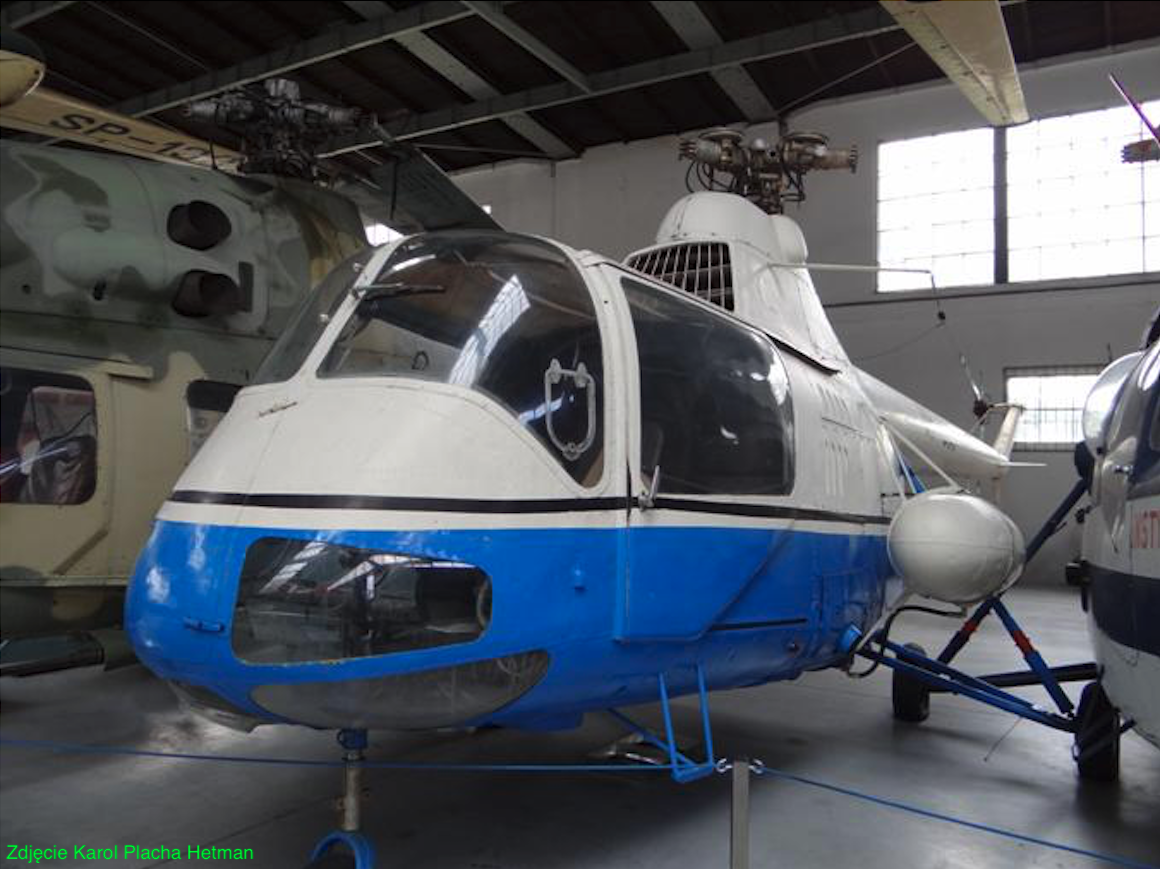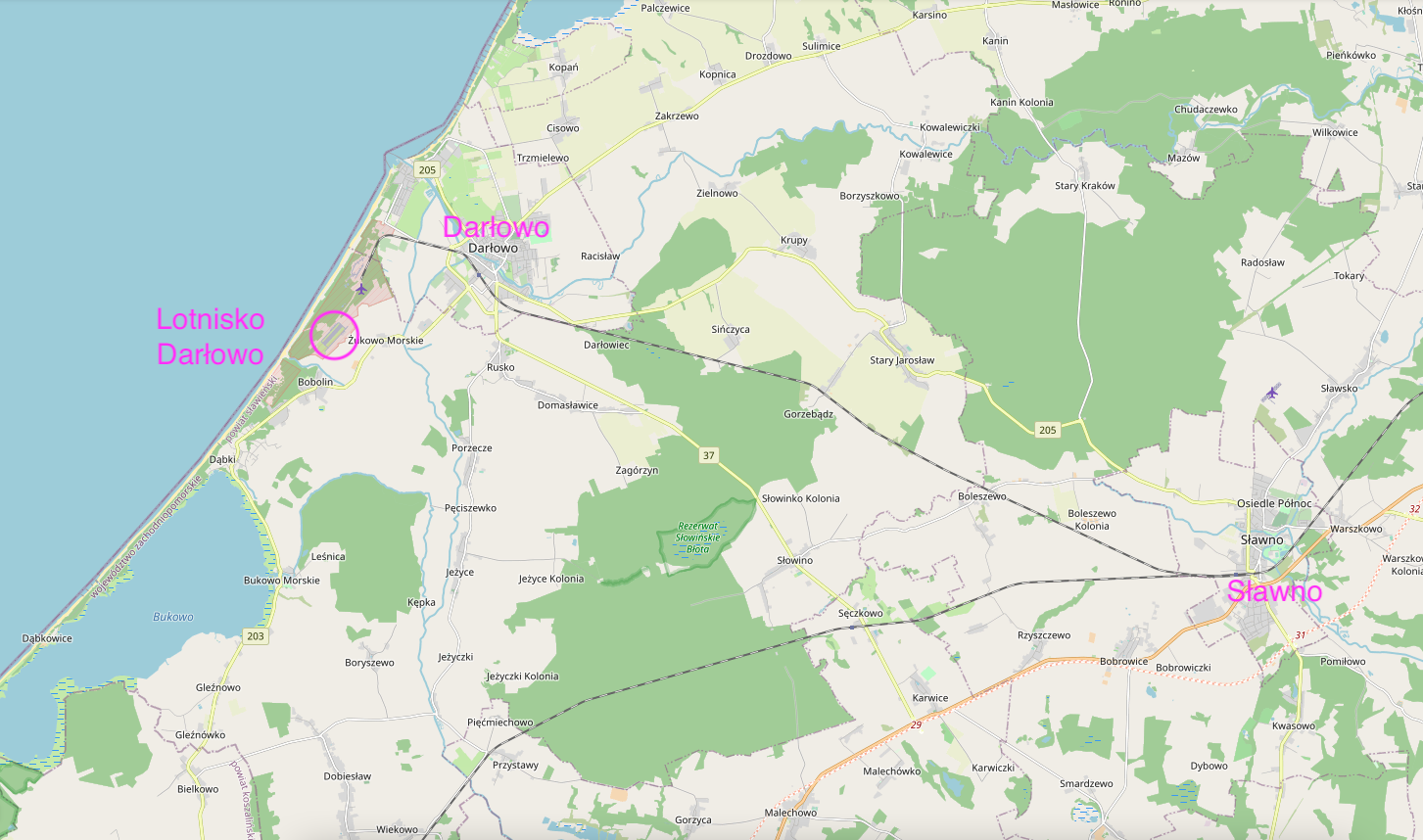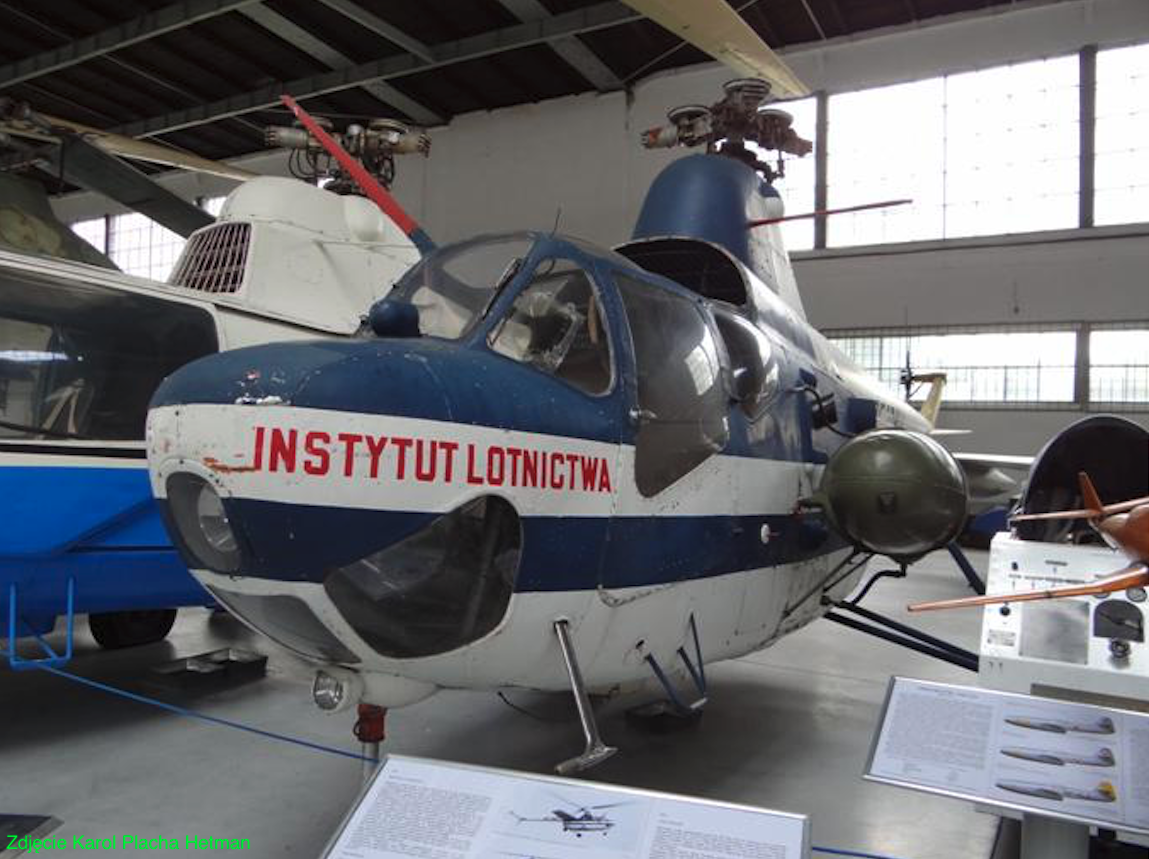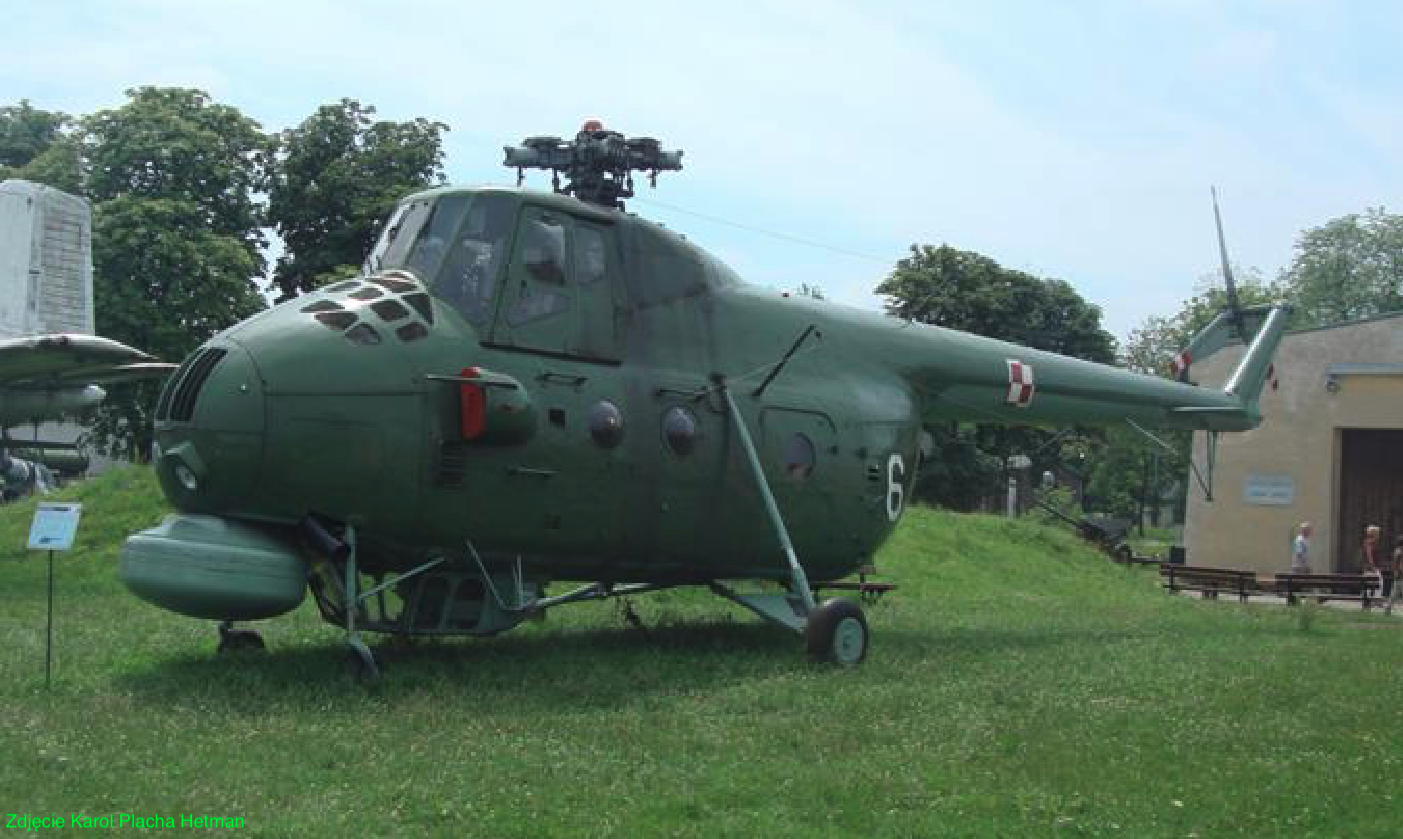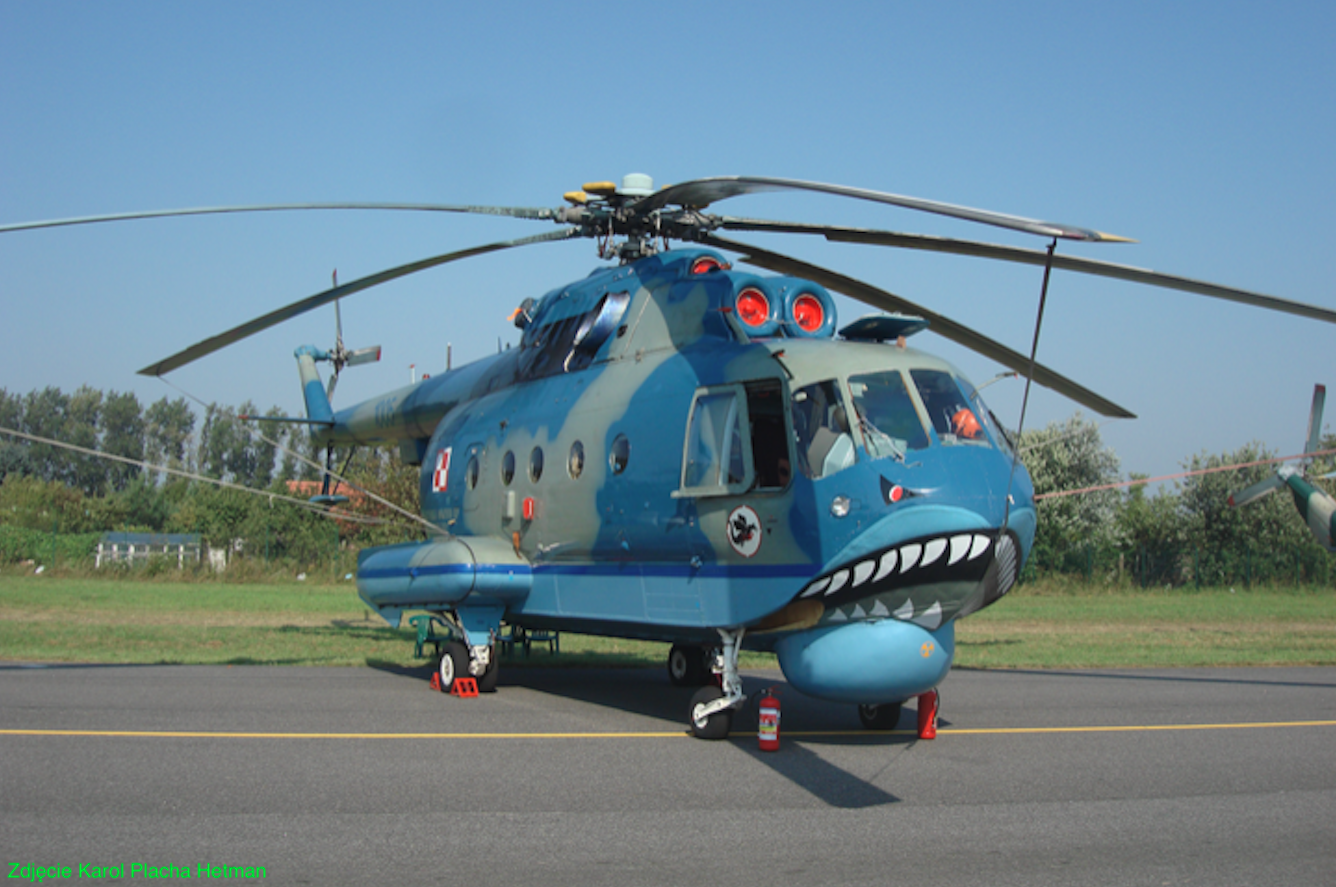Darłowo 2012-06-20
Lotnisko Darłowo.
Współrzędne geograficzne: 54.405N 16.353E.
Lotnisko w Darłowie.
W 2010 roku, Lotnisko Darłowo znajdowało się w strukturach 44. Bazy Lotnictwa Morskiego, które miało pod swoim dowództwem także Lotnisko Babie Doły i Lotnisko Siemirowice. Lotnisko Darłowo, mimo iż było użytkowane przez Polską Marynarkę Wojenną, pełniło typowe zadania policyjne i SAR na Morzu Bałtyckim. Było równocześnie udostępnione dla ruchu GA. Lotnisko Darłowo należy do tych lotnisk w Rzeczypospolitej Polskiej, którym nie groziła likwidacja, mimo zanikania cech militarnych. Była propozycja przeniesienia Lotniska Darłowo do struktur Ministerstwa Spraw Wewnętrznych. Lotnisko Darłowo jest bardzo specyficzne i nie ma odpowiednika w całej Rzeczypospolitej Polskiej. Mimo obecności na starym zmilitaryzowanym terenie, samo lotnisko jest nowoczesne i zdolne do ewentualnego przyjęcia nowoczesnych śmigłowców, które mogłaby Polska kupić.
Na przełomie 2010 i 2011 roku, lotnictwo morskie przeszło kolejną restrukturyzację. Funkcjonujące jako samodzielne jednostki eskadry, zostały włączone w struktury baz lotnictwa morskiego. Od 1 stycznia 2011 roku, Dowództwu Gdyńskiej Brygady Lotnictwa MW podporządkowane są dwie jednostki: 43. Baza Lotnictwa Morskiego w Gdyni Babich Dołach. 44. Baza Lotnictwa Morskiego w Siemirowicach i Darłowie.
Gdyńska Brygada Lotnictwa Marynarki Wojennej (BLMW) jest związkiem organizacyjnym morskiego rodzaju sił zbrojnych, czyli Marynarki Wojennej RP. W strukturze brygady funkcjonują obecnie trzy jednostki: Dowództwo Gdyńskiej Brygady Lotnictwa MW oraz 43. Baza Lotnictwa Morskiego (43 BLotM) i 44. Baza Lotnictwa Morskiego (44 BLotM). Samoloty i śmigłowce BLMW stacjonują na lotniskach w Gdyni Babich Dołach, Siemirowicach i Darłowie. Pisząc precyzyjnie, 44. Baza Lotnictwa Morskiego ma w swoich strukturach dwa lotniska: Lotnisko Siemirowice, na którym bazują samoloty, głównie PZL M-28 Bryza, różnego przeznaczenia oraz Lotnisko Darłowo, na którym bazują głównie śmigłowce, różnych typów.
Historia Lotniska Darłowo.
Obszar zawarty w trójkącie między miejscowościami; Darłowo, Darłówko i Dąbki, od XIX wieku, pełnił różne funkcje wojskowe. Wiązało się to z dogodnym położeniem na wybrzeżu Morza Bałtyckiego. Podobnie było w rejonie Ustki oraz Kołobrzegu. Szczególny rozkwit obszaru o charakterze wojskowym, nastąpił po dojściu bandyty Hitlera do władzy w niemczech. Armia niemiecka szykując się do drugiej wojny światowej, w okolicach Darłowa zorganizowała poligon dla wojsk artyleryjskich. Testowano na nim między innymi wielkie, dalekosiężne działa. Już w trakcie wojny, powstał tutaj niemiecki dywizjon artylerii kolejowej. Na potrzeby funkcjonowania tych jednostek zorganizowano tutaj lądowisko, które wpisało się w sieć lądowisk nadbrzeżnych. Występowały one na całej długości linii brzegowej, począwszy od Szczecina, aż do Królewca.
Po drugiej wojnie światowej, decyzją wielkich tego świata, Pomorze trafiło pod administrację Polską. Niemal wszystkie wojskowe obiekty położone na wybrzeżu zajęli moskale. Eksploatowali je w sposób rabunkowy, a nie będąc zainteresowanymi w ich dalszej eksploatacji, przekazywali je stopniowo Wojsku Polskiemu. Obiekty wojskowe z okolic Darłowa trafiły pod administrację Wojska Polskiego dopiero w 1947 roku. W 1948 roku, został tu przebazowany Dywizjon Artylerii Kolejowej Marynarki Wojennej, który sformowano na Oksywiu.
W 1950 roku, Rozkazem MON z dnia 8.08.1950 roku, sformowano w Darłowie 5. Batalion Wojsk Kolejowych (JW 2224) podległy Dowództwu Wojsk Lądowych PRL. Nowo powstały batalion przejął poniemieckie koszary. W 1955 roku, batalion został rozformowany. Kadra rozformowanej jednostki została rozesłana do pozostałych batalionów wojsk kolejowych, a obiekty w Darłowie wróciły ponownie pod opiekę Polskiej Marynarki Wojennej.
Druga połowa 50-lat XX wieku, to okres intensywnego wprowadzania do eksploatacji śmigłowców. Mogły one wykonywać zadania niedostępne dla samolotów. Dlatego zdecydowano się na wyposażenie w śmigłowce także Polskiej Marynarki Wojennej. Jednak trudna sytuacja ekonomiczne Polski, powodowała odsuwanie tego zamierzenia w czasie. W wyniku kolejnej przeformowań w Wojskowym Lotnictwie w 1962 roku, Szef Sztabu Generalnego Wojska Polskiego wydał w dniu 23.08.1962 roku, zarządzenie na mocy którego nakazano dowódcy Marynarki Wojennej (MW) sformować 28. Eskadrę Ratowniczą MW, na etacie nr 35/413 ze 121 żołnierzami i 1 pracownikiem cywilnym. Na miejsce jej stacjonowania wybrano Lotnisko Darłowo. Na wyposażenie eskadry trafiły już nie najnowsze śmigłowce SM-1 i SM-2. Tak rozpoczęła się lotnicza historia Darłowa, która trwa do chwili obecnej.
Już wówczas było wiadomo i zostało to potwierdzone, że eksploatacja statków powietrznych w strefie przybrzeżnej nastręcza dodatkowych problemów. Wiatr wiejący od strony morza przynosi drobne krople wody morskiej, które zawierają znaczne stężenie soli. Sól ta bardzo szkodzi metalowej konstrukcji statków powietrznych jak i ich elektronice. Dlatego Lotnisko Darłowo traktowano jako rozwiązanie tymczasowe. Lecz czas pokazał, że korzyści z lokalizacji są większe niż zwiększone wymagania co do obsługi sprzętu latającego.
Kolej do Darłowa.
W 1978 roku, za czasów germańskich, uruchomiono linię kolejową Korzybie – Darłowo, o długości 39 km. W Polsce linia ta otrzymała Nr 418. Pierwszy pociąg przejechał ten szlak w dniu 15 listopada 1878 roku. Po drugiej wojnie światowej, ponownie na tym szlaku uruchomiono ruch towarowy i pasażerski. Na szlaku były stacje: Korzybie – Zawistowo- Sławno – Nowy Jarosław – Sińczyca – Darłowo. Stacja kolejowa Sławno jest ważna, bo przez nią przebiega linia kolejowa Nr 202, łącząca Gdańsk i Stargard Szczeciński. Ze szlaku Nr 418 korzystały także pociągi wojskowe. Od stacji kolejowej w Darłowie tor biegnie dalej w kierunku południowo-zachodnim i jest to tor wojskowy, który prowadzi bezpośrednio na lotnisko i inne obiekty wojskowe. Ten tor ma długość około 5 km i liczne boczne tory z placami ładunkowymi.
Linia Nr 418 była zawsze jednotorową i niezelektryfikowaną. Przebiega przez lasy, łąki i nieużytki, długimi prostymi odcinkami. Prędkość szlakowa wynosiła 80 km/h. W 1991 roku, na linii Nr 418 wstrzymano ruch pasażerski. W 1997 roku, rozebrano odcinek Korzybie – Sławno. Byłe podtorze stało się drogami gruntowymi. W 2001 roku, z powodu złego stanu torowiska wstrzymano ruch towarowy Sławno – Darłowo. W 2002 roku, tor został wyremontowany, a prędkość szlakowa wzrosła do 100 km/h. Remont finansowało Ministerstwo Obrony Narodowej. Przywrócono ruch towarowy. W 2005 roku, przywrócono ruch pasażerski na trasie Sławno – Debrzno, ale już w 2012 roku, ponownie ruch pasażerski zamknięto. W okresie, na lato 2017 roku, ruch pasażerski wznowiono, a z uwagi na duże zainteresowanie, ponownie uruchomiono na lato 2018 roku. Następnie ruch pasażerski wznowiono już całorocznie. W 2018 roku przewieziono 13 200 pasażerów. Szlak obsługują nowoczesne autobusy szynowe. Ciekawostka jest to, że w Darłowie, przez przejazd kolejowy na ul. Aleja Wojska Polskiego ruch samochodowy wstrzymuje pracownik kolejowy.
Droga do Darłowa.
Dojazd do Darłowa umożliwiają drogi: Droga Krajowa Nr 37 (trasa ta łączy centrum Darłowa z drogą DK6 w okolicy Karwic), Droga Wojewódzka Nr 203 (trasa ta łączy Koszalin z Ustką), Droga Wojewódzka Nr 205 (trasa ta łączy Darłówko – Darłowo – Sławno i dalej do Bobolic).
Kompleks wojskowy.
Warto w tym miejscu napisać parę zdań o całym kompleksie wojskowym ukrytym w lasach pasu nadbrzeżnego między Darłowem-Darłówkiem, a Dąbkami. Obszar ten ciągnie się na długości około 6 km, a w najszerszych miejscach szerokość lasu nie przekracza 1 000 m. Cały obszar liczy około 3 600 hektarów. Od strony morza granicą są wydmy plaży. Natomiast od strony lądu z lasem stykają się tereny nieużytków, a całość zamyka Droga Wojewódzka Nr 203. Zasadniczą infrastrukturą tego obszaru były niemieckie umocnienia w postaci licznych, w większości nie wykorzystywanych bunkrów, które swoimi frontami są skierowane w kierunku Morza Bałtyckiego. Kompleks wojskowy rozpoczyna się w miejscu skrzyżowania dzisiejszych ulic Zwycięstwa i Lotników Morskich. Tutaj znajduje się główna brama wjazdowa na teren obecnej jednostki wojskowej JW. 4653 Darłowo, czyli 44. Bazy Lotnictwa Morskiego Polskiej Marynarki Wojennej (od 1.01.2011 roku).
Najstarsza część koszarowo-sztabowa została ukończona z początkiem 40-lat XX wieku. Oprócz budynków koszarowo-sztabowych otrzymała pełne zaplecze socjalno-bytowe, włącznie z magazynami, stajniami, boiskami i placem ćwiczeń wychowania fizycznego. Zajęła ona powierzchnię 18 hektarów.
Przemieszczając się w kierunku południowo-zachodnim znajduje się kolejny kompleks złożony z dziewięciu budynków powstałych jeszcze w czasie drugiej wojny światowej. Za czasów PRL zbudowano kolejne dwa budynki. W pierwotnym zamyśle był to kompleks dla kolejnej jednostki wojskowej.
Kolejnym obiektem jest lotnisko, które obecnie jest nazywane lądowiskiem, z którego operują śmigłowce. Pełni ono funkcje zaplecza technicznego dla 44. Bazy Lotnictwa Morskiego – Darłowo. Lądowisko powstało za czasów niemieckich w centrum lasu, poprzez jego wykarczowanie na powierzchni 10 hektarów. Za czasów PRL jego powierzchnia wzrosła do 15 hektarów. Maksymalna długość 600 m, a szerokość 250 m. Na potrzeby śmigłowców pole wzlotów otrzymało dwa heliporty, drogi kołowania i stojanki. Wszystko z nawierzchnią betonową. Na lądowisku jest kilka hangarów.
Przemieszczając się dalej w kierunku południowo-zachodnim napotykamy kompleks magazynowy. Charakterystycznym obiektem jest tutaj stacja radiolokacyjna. Obecna stacja to radar Polskie konstrukcji i produkcji; AVIA-W, który został tutaj zamontowany w 1982 roku.
Kolejnym wojskowym kompleksem jest Lotnisko Darłowo. Jego budowa rozpoczęła się w 1963 roku. Przyczynkiem była ciasnota lądowiska, którego rozbudowa była niemożliwa. Dlatego zdecydowano się na przeznaczenie na pole wzlotów nieużytków między lasem a Drogą Wojewódzką Nr 203. Warto zaznaczyć, że tutaj kończy się bocznica kolejowa.
Przemieszczając się dalej, na wysokości niewielkiej miejscowości Bobolin znajduje się kolejny kompleks wojskowy, który przez wiele lat był użytkowany przez 43. Dywizjon ogniowy artylerii rakietowej WOPK, jako JW. 2262. Funkcjonował on w okresie 25.04.1970 roku – 26.09.1995 roku. Jednostka podlegała 26. Brygadzie Rakietowej OP w Gryficach. Podstawowym uzbrojeniem były pociski rakietowe klasy z-p S-75M Wołchow. Obecnie (2013 rok) obiekt należy do Centrum Szkolenia Sił Powietrznych w Koszalinie, jako ośrodek szkolny.
Samoloty i śmigłowce w Darłowie.
Opis zdjęcia: Dokładnie ten śmigłowiec służył w okresie 1965-1975, w 28. Eskadra Ratownicza Marynarki Wojennej na Lotnisku Darłowo w grupie czterech takich egzemplarzy. Malowanie oryginalne.
Ponieważ śmigłowce z racji ograniczonego zasięgu, nie bardzo nadawały się do zadań patrolowych, dlatego w 1966 roku, jednostka wojskowa została wyposażona w samoloty An-2.
W 1968 roku, jednostka wojskowa została wyposażona w śmigłowce PZL Mi-2 RM. Wersja Mi-2 RM była jedną z pierwszych wersji specjalistycznych zbudowanych na bazie podstawowego modelu Mi-2, specjalnie dla 28. Eskadry Ratowniczej Marynarki Wojennej. Ostateczna wersja powstała w 1969 roku. Śmigłowiec wyposażono w; dodatkowy zbiornik paliwa umieszczony w kadłubie, podnośnik hydrauliczny, apteczkę, nosze oraz tratwy ratunkowe. Zbudowano łącznie 16 śmigłowców w tym wariancie. Weszły one na wyposażenie 28. ER MW i 18. Eskadry Lotnictwa Łącznikowego MW.
Początek 80-lat to kolejny okres zwiększonych zbrojeń Układu Warszawskiego. W lipcu 1981 roku, eskadra otrzymała pierwsze śmigłowce ZOP typu Mi-14 PŁ. W 1983 roku, sformowano trzeci klucz śmigłowców zwalczania okrętów podwodnych.
Opis zdjęcia: Mi-14 PŁ Nr A1005. Śmigłowiec zbudowano 10.06.1980 roku i dostarczono do Polski w dniu 15.07.1981 roku. Wszedł na stan 28. eskadry ratowniczej MW (JW. 1470), która w dniu 1.12.1983 roku, została przeformowana w 16. Pułk Lotnictwa Specjalnego MW (JW. 1470).
Pod koniec 1983 roku (1.12.1983 roku), 28. Eskadra Ratownicza Marynarki Wojennej została przeformowana w 16. Pułk Lotnictwa Specjalnego Marynarki Wojennej, nadal jako JW. 1470. Nastąpiło to Zarządzeniem Szefa Sztabu Generalnego, wydanym w lipcu 1983 roku. 16. Pułk Lotnictwa Specjalnego MW składał się z eskadry zwalczania okrętów podwodnych (ZOP) składającą się z 3 kluczy śmigłowców Mi-14 PŁ oraz eskadrę ratowniczą w składzie: klucza śmigłowców Mi-14 PS, klucza śmigłowców Mi-2 i klucza samolotów An-2.
W lutym 1984 roku, w Darłowie pojawiły się śmigłowce Mi-14 PS. Wśród nich był między innymi śmigłowiec Mi-14 PS Nr A1016, który został zbudowany 25.12.1983 roku. Dostarczony do Polski 27.02.1984 roku. Przyjęty na stan 16 PLS MW w dniu 3.04.1984 roku.
Zła sytuacja gospodarcza Polski powodowała kolejne przeformowania. Z dniem 1.07.1988 roku, 16. Pułk Lotnictwa Specjalnego Marynarki Wojennej został rozformowany. Sprzęt i personel wcielono w struktury nowo powstałego 7. Pułku Lotnictwa Specjalnego z miejscem bazowania w Siemirowicach i Darłowie, jako JW 5576. Tak nastąpił okres wieloletniego połączenia Lotniska Darłowo z Lotniskiem Siemirowice.
Już w dniu 1.07.1991 roku, została utworzona 40. Eskadra Zwalczania Okrętów Podwodnych i Ratownictwa (JW 1880). W dniu 23.09.1994 roku, Prezydent Rzeczypospolitej Polskiej nadał jednostce sztandar, który ufundowało społeczeństwo regionu Darłowa. W celu podkreślenia więzi 2. Dywizjonu Lotniczego z 28. Eskadrą Lotnictwa Ratowniczego oraz ze społeczeństwem Darłowa we wrześniu 1998 roku, decyzją Ministra Obrony Narodowej dywizjon otrzymał nazwę wyróżniającą „Darłowski”.
W związku z powstaniem Brygady Lotnictwa MW z dniem 1.07.1995 roku, na bazie rozformowanej eskadry utworzono dwie nowe jednostki: 2 Dywizjon Lotniczy (JW. 4061) oraz 4 Batalion Zabezpieczenia. Było to przygotowanie Rzeczypospolitej Polskiej do wstąpienia do NATO, gdzie jest rozdzielenie komponentu lotniczego (latającego) od bazy lotniczej.
W nowym wieku.
Z początkiem nowego wieku, nastąpiły kolejne zamiany w strukturach MW. W dniu 1.01.2003 roku, 2. Dywizjon Lotniczy MW przeformowano w 29. Eskadrę Lotniczą, jako JW. 4649. Samo Lotnisko Darłowo było pod zarządem Komendy Lotniska Nr 2. Decyzją Ministra Obrony Narodowej z dnia 7.04.2005 roku, 29. Darłowska Eskadra Lotnicza przejęła i kontynuowała tradycje poprzednich jednostek lotniczych.
W grudniu 2010 roku, 29. Eskadra Lotnicza została rozformowana i stała się Grupą Lotniczą wchodzącą w skład 44. Bazy Lotnictwa Morskiego (JW. 4653), która posiada trzy lotniska; Babie Doły, Siemirowice, Darłowo. Nowa jednostka wchłonęła; 29. Darłowską Eskadrą Lotniczą oraz 30. Kaszubską Eskadrą Lotnicza. Data rozpoczęcia działalności 44 Bazy Lotnictwa Morskiego MW to 1.01.2011 roku. W jej skład wchodzi obecnie Grupa Lotnicza Siemirowice wyposażona w samoloty patrolowo – rozpoznawcze An-28 B1R i An-28 B1RM Bis, samoloty monitoringu ekologicznego An-28 E oraz Grupa Lotnicza Darłowo wyposażona w śmigłowce zwalczania okrętów podwodnych Mi-14 PŁ, śmigłowce ratownicze Mi-14 PŁ/R i W-3 RM „Anakonda” oraz śmigłowce Mi-2. Do głównych zadań bazy należy rozpoznanie i wskazywanie celów okrętom, poszukiwanie, śledzenie i niszczenie okrętów podwodnych, zabezpieczenie ratownicze Polskiej strefy poszukiwania i ratownictwa na morzu oraz monitoring ekologiczny Polskiej Strefy Ekonomicznej na Bałtyku. Jednostką dowodzi kmdr pil. Jarosław Andrychowski.
W 2012 roku, z eksplantacji zostały wycofane śmigłowce ratownicze Mi-14 PS i zostały przekazane do Muzeum Sił Powietrznych w Dęblinie. Historia Mi-14 PS rozpoczęła się od zakupu w 1984 roku, czterech śmigłowców dla Polskiej Marynarki Wojennej. Dwa z nich utracono w trakcie eksploatacji co spowodowało, że w 1990 roku, dokupiono kolejny śmigłowiec. W wyniku przemian społeczno-gospodarczych, śmigłowce zaczęto wykorzystywać w ramach operacji SAR. W okresie 1992 – 2010, ich załogi uczestniczyły w 241 akcjach ratowniczych nad morzem udzielając pomocy 115 osobom. W 1997 roku, podczas operacji przeciwpowodziowej na południu Polski, jeden Mi-14 PS, w trakcie 24 lotów wykonanych w ciągu 4 dni ewakuował 275 osób. Pod koniec października 2008 roku, z powodu kończącego się resursu, rozpoczął się proces ich wycofywania z eksploatacji. Jako pierwsza służbę zakończyła dokupiona maszyna z nr 5137. Mi-14 PS z Nr 1016 przeszedł na emeryturę w styczniu 2010 roku, a w dniu 12.12.2010 roku, z eksploatacji wycofany został ostatni śmigłowiec z nr 1013.
W 2012 roku, minęło 50-lecie działania Lotnictwa Marynarki w Darłowie. Z tej okazji, w dniu 14.08.2012 roku, na Lotnisku Darłowo zorganizowano świąteczny pokaz. W południe na Rynku w Darłowie zaprezentowano nowy sztandar 44. Bazy Lotnictwa Morskiego. Po południu w powietrzu zaprezentowały się wojskowe statki powietrzne. Widownią stała się wschodnia plaża. Pokaz rozpoczęły samoloty Sił Powietrznych Szwecji JAS 39 Gripen. Następnie były Su-22 i MiG-29 Polskich Sił Powietrznych oraz śmigłowiec Mi-24 z Wojsk Lądowych. Blok Lotnictwa Morskiego rozpoczął śmigłowiec pokładowy SH-2G. Potem były; Mi-2, M-28 Bryza, Mi-14PŁ/R. Było podjęcie rozbitka z wody i przekazania go na jednostkę Morskiej Służby Poszukiwania i Ratownictwa m/s Tajfun.
W 2013 roku, na Lotnisku Darłowo w grupie lotniczej bazowały następujące statki powietrzne: Śmigłowiec ratowniczy Mi-14PŁ/R – 2 sztuki. Śmigłowiec ratowniczy W-3RM "Anakonda" – 2 egzemplarze. Śmigłowiec ZOP Mi-14PŁ – 8 egzemplarze. Śmigłowiec Mi-2 – 3 egzemplarze.
Dane – Lotnisko Darłowo.
Adres Darłowo JW. 4653, do 31.12.2010r. jako JW. 4649. 76-156 Darłowo, tel. +48943147255. JW. 4653, 44 Baza Lotnictwa Morskiego, Wojskowy Port Lotniczy Darłowo, (kod lotniska ICAO: EPDA). Parametry lotniska: 54° 24′ 17,22” N, 016° 21′ 11,02” E. Elewacja/Elevation 1,98 m AMSL. RWY/DS; 04/22, Asfaltobeton, Wymiary: 600 x 30 m, 041°/221°. DS. ma zaledwie 600 m długości, jednak istnieje możliwość jego znacznego wydłużenia. Częstotliwości radiowe: Darłowo INFO: 128.500 (H24).
Lotnisko Wojskowe Darłowo (kod ICAO EPDA) jest lotniskiem udostępnionym lotnictwu cywilnemu. Dozwolony ruch lotniczy: VFR. Lotnisko znajduje się w AIP. Zawsze przed lotem należy się skonsultować i uzyskać aktualne informacje. Wnioski o zezwolenie na lądowanie krajowych cywilnych statków powietrznych należy składać do Szefostwa Służby Ruchu Lotniczego Sił Zbrojnych RP w terminie 7 dni przed planowanym przylotem (tel.: +48-22-682-5073, faks: +48-22-682-5312). Wnioski o zezwolenie na lądowanie zagranicznych cywilnych statków powietrznych należy składać do Dowództwa Sił Powietrznych w terminie 21 dni przed planowanym przylotem (tel.: +48-22-682-5750, faks: +48-22-682-5480) zgodnie z obowiązującymi przepisami w Siłach Zbrojnych RP. Wszystkie informacje dotyczące przestrzeni wokół lotniska, zapewniania służb ruchu lotniczego, informacji o samym lotnisku i jego dostępności zainteresowani znajdą w MIL AIP Polska, AD4 EPDA. Należy zalogować się na stronie Polskiej Agencji Żeglugi Powietrznej i tam uzyskamy konieczne informacje. Aktualne opłaty za korzystanie z lotniska dostępne są u Zarządzającego Lotniskiem. I tak poglądowo może to być za start i lądowanie statków powietrznych MTOW do 2 ton – 60 PLN +VAT (opłatę obniża się o 50% dla śmigłowców), za każdą rozpoczętą dobę postoju 7 PLN + VAT, za każdego pasażera 30 PLN + VAT, za zapewniane służby ruchu lotniczego i informacje lotnicze oraz meteorologiczne 50 PLN + VAT, operacje lotnicze wykonywane w ciągu doby 100 PLN + VAT. Wniosek może być złożony na wykonywanie operacji lotniczych np. na cały rok lub określoną jego część. Umowę można podpisać już na miejscu po przylocie. Przed przylotem do Darłowa, pilot musi zaznajomić się z aktualną mapą lotniczą, bo dużo tutaj jest wiatraków i wciąż powstają nowe. Ponadto radionawigacyjne urządzenia wojskowe nie są jeszcze certyfikowane przez władze cywilne, zatem nie mogą być wykorzystywane przez statki powietrzne lotnictwa innego niż państwowe, co oznacza że tylko lot VFR jest tu możliwy.
Lotniskowa Stacja Meteorologiczna. Lotnisko posiada minima meteorologiczne dla lotów VFR jak większość lotnisk kontrolowanych – 450/5 w dzień i 500/5 w nocy. Lotnisko obsługuje statki powietrzne kategorii A i B, a śmigłowce traktowane są jak samoloty kategorii A. Na lotnisku dostępna jest informacja lotnicza zapewniana 24h na dobę przez Biuro Odpraw Załóg oraz informacje i odprawy meteorologiczne w Lotniskowym Biurze Meteorologicznym, a te są w tym samym budynku, w którym ulokowana jest Wieża Kontroli Ruchu Lotniczego.
Około 1969 roku, Lotnisko Darłowo wyposażono w system lądowania RSL. W grudniu 2012 roku, pojawiła się informacja, że lotnisko Darłowo otrzyma jeden z dziewięciu zakupionych przez Polskę amerykańskich radiolokacyjnych systemów lądowania PAR/GCA-2000 firmy ITT. Montaż urządzenia ma nastąpić w 2014 roku.
Opracował Karol Placha Hetman

